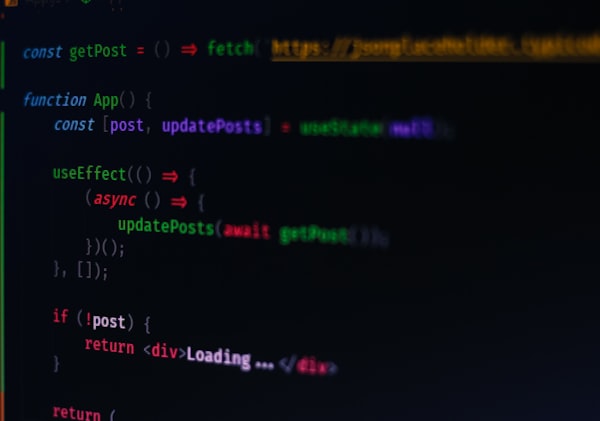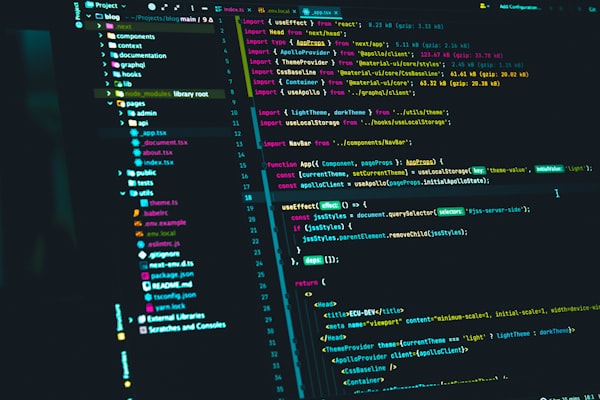1. Understanding the Basics: What is JavaScript Animation?
Ahoy, brave adventurer! Today, we embark on a marvelous journey through the magical land of JavaScript animation. Before you pack your bags and dust off your adventurer's hat, let's answer one crucial question. What in the world of 1's and 0's is JavaScript animation?
In its simplest terms, JavaScript animation is akin to a puppeteer making their marionettes dance. It's the art of using JavaScript, the world's favorite scripting language, to give life and movement to otherwise static web elements.
Why, you might ask? Just for the giggles? Well, not quite. It's a bit like when Thor got his hammer, Mjölnir – it gives you the power to create a more interactive and engaging user experience. We're talking slide effects, fades, color changes, size transformations – the works!
JavaScript accomplishes these animations by altering an element's CSS properties over a set period. You could think of it as asking a div to 'moonwalk' from left to right. It's a bit of a party trick for your website, but without the awkward morning-after.
Our quest into JavaScript animation promises to be full of laughter, tears (the good kind), and 'Aha!' moments. We'll uncover hidden treasures and slay the dragons of complexity. Buckle up, my friend. You're in for a thrilling ride.
So remember, brave adventurer, JavaScript animation is not just a dry, techy term. It's a powerful tool at your disposal, a tool that can make your website dance to your tunes! Sounds cool, doesn't it? We thought so too. So let's get moving – our adventure awaits!
2. The Significance of JavaScript in Modern Web Design
Alright, you seasoned explorer, having uncovered the mystical lore of JavaScript animation, let's delve into another tantalizing mystery: the significance of JavaScript in modern web design.
JavaScript, often likened to the Michelangelo of the web world, has dramatically reshaped the landscape of modern web design. It has given designers the ability to transform static webpages into dynamic, interactive masterpieces.
Think of JavaScript as the spice in your grandma's secret sauce. It's the special ingredient that gives a website its zing, its zest, its flavor. Can you imagine the web without a dash of JavaScript? That's like envisioning a world without laughter. Truly dreadful, isn't it?
In today's era, a well-crafted website doesn't just sit there like a lemon; it interacts, it engages, and it communicates. And JavaScript, dear adventurer, is the magical tongue that allows websites to speak. Clicks, scrolls, drags – it's the key to these interactive elements, adding layers of engagement that keep users coming back for more.
But the wonders of JavaScript aren't merely confined to enhancing user interactions. Oh no, it's much more! This magical script can manipulate the Document Object Model (DOM), the very backbone of a webpage. It's like being handed the keys to the kingdom. You can create, remove, and change HTML elements and attributes. You can change styles, react to events, and even create cookies (sadly, not the edible kind).
In essence, JavaScript is an essential ingredient for modern web design, making it as interactive, dynamic, and responsive as a highly caffeinated jack-in-the-box. It's that jolt of electricity, that dash of magic, that transforms a bland webpage into an interactive spectacle.
So, gallant explorer, remember the power of JavaScript and wield it wisely in your journey through the realm of web design. There's much to discover, and with JavaScript at your side, you're unstoppable!
3. Essential JavaScript Animation Techniques for Beginners
Greetings, steadfast traveler! Having uncovered the profound importance of JavaScript in modern web design, let's venture into a new realm - essential JavaScript animation techniques for beginners.
No need to look like a deer caught in the headlights. While JavaScript might appear daunting, remember, every Jedi Master started as a young Padawan. Let's learn to crawl before we sprint, shall we?
1. CSS Transitions – The Subtle Maestro:
CSS transitions, the gentlest form of JavaScript animation, are like a soft violin serenade. It's the smooth change from one CSS style to another, all achieved with a sprinkling of JavaScript magic. These transitions are brilliant for adding a dash of pizzazz to hover effects, changing colors, and more. So, go ahead, let your website sway elegantly to the tune of CSS transitions.
2. CSS Animations – The Flamboyant Entertainer:
CSS animations, a step up from transitions, are the Broadway musicals of the JavaScript animation world. They add flair and rhythm, letting you animate HTML elements from one CSS style to another. With JavaScript, you can control the timing, duration, and much more. It's like choreographing a ballet, but instead of dancers, you're leading divs and spans.
3. RequestAnimationFrame – The Precision Tactician:
And then, we come to the RequestAnimationFrame. A bit of a mouthful, eh? But don't let the hefty name intimidate you. It's the marksman of JavaScript animation techniques. If CSS transitions are a violin and CSS animations are a Broadway musical, RequestAnimationFrame is a Swiss watch. It lets you create animations that sync with your device's refresh rate, ensuring your animations are as smooth as butter on a hot summer day.
Remember, brave adventurer, the art of animation is akin to wielding a paintbrush. It's all about expressing your creativity. So whether you're an aspiring web designer or a curious cat, these fundamental JavaScript animation techniques are your first step towards creating interactive, engaging web magic. Let's continue our expedition, for there are many more treasures to unearth in the vibrant world of JavaScript animation!
4. Step-by-Step Guide: Creating Your First JavaScript Animation
Aloha, daring explorer! Feeling the thrill of anticipation? Well, hold onto your hats because we're diving headfirst into the wonderful world of creating JavaScript animations. It's time to swap those learning goggles for some crafting gloves and build our very first JavaScript animation. Ready to get your hands code-dirty? Let's do this!
1. Choose Your Dance Partner (HTML Element)
Every good dance needs a partner, and in our JavaScript jig, that partner is an HTML element. You might choose a humble div, a sprightly span, or even a mysterious img. The choice, dear friend, is yours.
<div id="dancePartner">Let's Dance!</div>
2. Cue the Orchestra (JavaScript)
With your dance partner ready, it's time to play some music. JavaScript, our maestro, is all set to create an animation masterpiece.
let dancePartner = document.getElementById("dancePartner");
3. Start the Waltz (CSS Styling)
Now, the dance begins. We'll start by moving our dance partner from the left of the stage (page) to the right.
let position = 0; // Our dance partner starts at the leftmost edge of the stage.
function step() {
if (position < 1000) { // The right end of the stage is at 1000.
position += 5; // Each step moves our partner 5 units to the right.
dancePartner.style.left = position + "px"; // 'px' is short for pixels.
requestAnimationFrame(step); // This asks JavaScript to perform the next dance step.
}
}
step(); // And we're off! The dance has begun.
Et voila! You've just created your first JavaScript animation. Is it a simple side-step? Absolutely. But remember, even the most intricate waltzes start with a single step.
So don't stop here, bold adventurer! The land of JavaScript animations is vast and brimming with potential. Keep exploring, keep learning, and above all, keep dancing. The stage is yours, and with JavaScript as your partner, the possibilities are truly limitless.
5. Enhancing UX with Advanced JavaScript Animations
Salutations, dauntless explorer! Now that you've cut your teeth on some basic JavaScript animations, let's delve deeper into this enigmatic realm. Our next quest? Enhancing User Experience (UX) with advanced JavaScript animations.
Oh, the joys of UX! It's like the cream in your coffee, the cherry on your sundae, the... you get the point. Exceptional UX is what separates a good website from a great one. And advanced JavaScript animations? They're the special sauce in the UX gourmet burger. Let's dive into how you can spice up your website's UX with some advanced JavaScript magic.
1. Transitioning between pages - The Smooth Operator:
Gone are the days of jarring page transitions. With JavaScript, you can make your website flow like a dreamy stream. Imagine clicking a link and watching the new page slide in gently from the side. Feels better than sliding into a warm bath on a winter's night, doesn't it?
2. Loading animations - The Impatient Soother:
What do you do when you need to keep your users waiting? Distract them, of course! A rotating globe, a dancing logo, or a bouncing ball – a well-crafted loading animation can turn an impatient wait into a delightful anticipation.
3. Interactive elements - The Engagement Wizards:
Buttons that grow, text that shrinks, forms that glow – JavaScript can make your website elements respond to user actions in exciting, interactive ways. It's like playing a game of peek-a-boo with your users, keeping them engaged and intrigued.
4. Scroll animations - The Storytellers:
Long-scrolling websites can tell beautiful, immersive stories. And with JavaScript, these stories can come alive. Imagine elements that slide, rotate, or fade in as you scroll. It's like reading a pop-up book, but in a much cooler, digital way.
Remember, brave adventurer, advanced JavaScript animations are a potent tool in your UX arsenal. They can turn a mundane browsing experience into a delightful, engaging journey. Use them wisely, and your users will be coming back for more, just like a bee to a flower. So let's continue our exploration, for there's a whole world of JavaScript animations waiting to be discovered!
6. Mastering Libraries: Three.js and GSAP for Advanced JavaScript Animations
Howdy, intrepid explorer! Now that we've dipped our toes into the vast ocean of UX enhancement with advanced JavaScript animations, let's dive deeper. We're about to embark on a thrilling voyage into the majestic realms of JavaScript libraries: Three.js and GSAP. Buckle up; we're in for a wild ride!
1. Three.js – The 3D Maestro:
First, let's unravel the magic of Three.js, the veritable Picasso of 3D web animations. If JavaScript were an art studio, Three.js would be its premier 3D sculpting tool. This powerful library allows you to add an immersive, three-dimensional zing to your website. You can create shapes, animate objects, and even build entire 3D scenes! It's like stepping into a virtual reality, right from your browser.
From spinning cubes to interactive solar systems, Three.js is your ticket to creating awe-inspiring 3D animations. And the best part? You don't need to be a 3D wizard to get started. Just a dash of JavaScript knowledge, a sprinkle of Three.js, and voila! You're all set to sculpt your 3D masterpiece.
2. GSAP – The Animation Titan:
Next, let's meet GSAP, the Usain Bolt of web animations. GSAP, short for GreenSock Animation Platform, is a robust library known for its speed, flexibility, and efficiency. It's like a supercharged sports car, revved up and ready to take your web animations to the next level.
From simple transitions to complex animations with multiple stages, GSAP can handle it all with grace and finesse. Want to animate CSS properties? Check. Animate SVGs? Check. Create timeline-based animations? Double-check. With GSAP at your disposal, you're armed with one of the most powerful animation tools in the JavaScript kingdom.
So remember, valiant adventurer, the magic of Three.js and GSAP lies in their power to elevate your JavaScript animations from ordinary to extraordinary. These libraries are your allies, your trusty steeds in the thrilling journey of web animations. Harness their power, and let your creativity run wild. The realm of advanced JavaScript animations awaits!
7. Working with JavaScript Animation Frameworks: Anime.js and Velocity.js
Greetings, valiant voyager! Now that we've explored the fascinating realms of Three.js and GSAP, let's voyage further into the intriguing world of JavaScript animation frameworks. Our trusted companions on this journey? The formidable Anime.js and Velocity.js. Ready to unearth the secrets of these powerful frameworks? Let's go!
1. Anime.js – The Choreographer Extraordinaire:
Anime.js is a bit like the master choreographer of JavaScript animation frameworks. It's got grace, style, and a flair for coordination. This lightweight yet potent framework lets you craft complex animations with impeccable timing, precise control, and a satisfyingly smooth flow.
Animating DOM elements, SVGs, CSS properties – you name it, Anime.js can do it. And with its easy-to-use API, creating impressive animations is as simple as a do-si-do at a country dance. No wonder it's adored by web designers far and wide!
2. Velocity.js – The Speedster Sensation:
Next on our roster is Velocity.js, the speed demon of the JavaScript animation world. It's like the superhero Flash - it gets things moving fast! Offering similar capabilities to jQuery's $.animate(), but at a much faster pace, Velocity.js delivers high-performance animations without breaking a sweat.
What makes Velocity.js a champion? It's its ability to animate scrolling, SVGs, and even transform properties with incredible speed. And the best part? It's easy to learn and a joy to use. With Velocity.js at your command, you'll be zipping through complex animations like a hot knife through butter.
As you explore the boundless universe of JavaScript animations, remember, Anime.js and Velocity.js are like the wind beneath your wings. They offer power, speed, and an unrivaled ease of use, making the journey not just easier but enjoyable. So strap on your adventurer's hat, grab hold of these potent frameworks, and continue your voyage into the exciting realm of JavaScript animations. The adventure is just getting started!
8. Practical Examples: Using JavaScript Animations in Real-World Scenarios
Hail, brave adventurer! Having journeyed through the magical realms of JavaScript libraries and frameworks, it's time to bring our knowledge into the light of day. Ready to see JavaScript animations in action? Grab your field glasses and let's observe them in their natural habitat – real-world scenarios.
1. E-commerce Websites – The Product Showcase Wonders:
Imagine strolling into an online store, where product images spin gracefully, revealing all angles. Descriptions fade in as you scroll, and prices bounce gently when discounted. It's like shopping in Diagon Alley, isn't it? That's the magic of JavaScript animations, transforming e-commerce websites into interactive showcases.
2. Blogs – The Storytelling Enchanters:
Ever stumbled upon a blog where stories unfold as you scroll? Images slide in, text blocks fade out, and quotes pop up like delighted surprises. It's like reading a storybook where the tale leaps off the page! With JavaScript animations, blogs can become immersive storytelling experiences.
3. Educational Websites – The Learning Facilitators:
Think of an educational website where complex concepts come alive. Diagrams animate to explain ideas, figures rotate to reveal data, and interactive quizzes spring up to test your understanding. It's learning made fun and engaging, all thanks to JavaScript animations.
4. Portfolio Websites – The Self-Expression Artists:
Ever visited a portfolio website that leaves you awestruck? As you navigate, projects slide in, descriptions unfurl, and testimonials gently fade into view. It's like attending a theatre performance that tells the artist's story, all made possible with JavaScript animations.
Remember, noble explorer, JavaScript animations aren't just about fancy effects. They are tools for enhancing user experiences, conveying information, and adding an element of delight. As you venture forth in your web development journey, keep these practical examples in mind. They are testament to the power of JavaScript animations and the mesmerizing experiences they can create. Happy exploring!
9. Common Challenges in JavaScript Animations and How to Overcome Them
Ahoy, courageous explorer! Every adventure has its trials, and our JavaScript animation journey is no exception. From battling dragons to scaling mountains, we're about to confront some common challenges in JavaScript animations. Ready to conquer these pesky foes? Let's draw our swords and charge!
1. Performance Issues – The Web's Heavyweights:
Ever crafted an animation that moves slower than a sloth on a lazy Sunday? That's a classic sign of performance issues. But fear not, there's a handy ally in our corner: hardware acceleration. By enabling it, you can delegate some of the rendering tasks to your GPU, lightening the load on your CPU. This way, even complex animations can run smoothly, making your sloth sprint like a cheetah!
2. Cross-Browser Compatibility – The Inconsistent Foes:
Ah, the bane of every web developer's existence – cross-browser compatibility issues. It's like attempting to choreograph a dance where every dancer has their own unique rhythm. But with tools like Babel and Polyfill, you can ensure your JavaScript animations dance in harmony across all browsers. They translate your advanced JavaScript into a version that all browsers can understand, avoiding any missteps in the performance.
3. Complexity of Animations – The Mighty Labyrinth:
Creating complex animations can feel like navigating a treacherous maze. But here's where animation libraries like GSAP, Anime.js, and Three.js shine. They simplify the process, making it easy to create intricate animations without getting lost in the labyrinth. With these trusty guides, you can conquer any animation challenge that comes your way.
Remember, valiant adventurer, every challenge is an opportunity in disguise. As you venture forth into the world of JavaScript animations, these common hurdles will only make you stronger, sharper, and more skilled. So draw your sword, steady your shield, and step boldly into the fray. The world of JavaScript animations awaits, and with these tips in your arsenal, there's no challenge you can't overcome!
10. Exploring the Future of JavaScript Animations: Trends and Predictions
Hark, brave time-traveler! Having traversed the vast landscapes of the present-day JavaScript animation kingdom, let's cast our eyes toward the horizon. What does the future hold for our cherished realm? Let's unravel the prophecies and uncover the trends that will shape the future of JavaScript animations. Grab your crystal ball, and let's dive in!
1. The Emergence of AI-Driven Animations - The Intelligent Illusionists:
In the not-so-distant future, we could see AI taking the reins in crafting intricate animations. Imagine a world where Artificial Intelligence algorithms tweak and refine animations to optimize user engagement, all in real-time. It's like having a magician who conjures the perfect illusion, every single time.
2. The Rise of VR and AR in Web Experiences - The Reality Shapers:
With technologies like WebXR gaining momentum, we might see a surge in VR and AR experiences on the web. JavaScript animations will play a vital role in this, crafting immersive, 3-dimensional experiences that transport users to different realities. It's like stepping into a portal, right from your web browser!
3. The Evolution of Interactive Storytelling - The Digital Narrators:
As long-scrolling websites become more popular, we'll likely see JavaScript animations playing a larger role in digital storytelling. This could usher in an era of interactive narratives, where animations respond to user input, crafting a unique story for each visitor. It's like living your own adventure, right on the webpage!
4. The Growth of Eco-friendly Design - The Green Champions:
As we grow more conscious of our digital carbon footprint, we might see a trend towards "lighter" animations that use fewer resources. JavaScript animations will need to balance eye-catching design with energy efficiency. It's like creating a beautiful garden that's not just pleasing to the eye, but also kind to Mother Nature.
As you continue your voyage through the enchanting realm of JavaScript animations, remember, the future is a land of endless possibilities. As trends emerge and technologies evolve, there will always be new frontiers to explore, new challenges to overcome, and new wonders to create. So strap in, future explorer! The journey into the future of JavaScript animations is just getting started!








